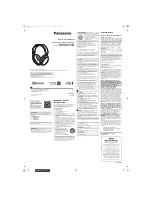
LISA-U1 series - System Integration Manual
3G.G2-HW-10002-3
Preliminary
Design-In
Page 103 of 125
Do not place antenna in close vicinity to end user since the emitted radiation in human tissue is limited by
S.A.R. regulatory requirements
Do not use directivity antenna since the electromagnetic field radiation intensity is limited in some countries
Take care of interaction between co-located RF systems since the GSM transmitted power may interact or
disturb the performance of companion systems
Place antenna far from sensitive analog systems or employ countermeasures to reduce electromagnetic
compatibility issues that may arise
2.4.1
Antenna termination
The LISA-U1 series modules are designed to work on a 50 load. However, real antennas have no perfect 50
load on all the supported frequency bands. Therefore, to reduce as much as possible performance degradation
due to antenna mismatch, the following requirements should be met:
Measure the antenna termination with a network analyzer: connect the antenna through a coaxial cable to the
measurement device, the |S
11
| indicates which portion of the power is delivered to antenna and which portion is
reflected by the antenna back to the module output.
A good antenna should have an |S
11
| below -10 dB over the entire frequency band. Due to miniaturization,
mechanical constraints and other design issues, this value will not be achieved. An |S
11
| value of about -6 dB - (in
the worst case) - is acceptable.
Figure 54 shows an example of this measurement:
Figure 54: |S
11
| sample measurement of a penta-band antenna that covers in a small form factor the 4 GSM bands (850 MHz, 900
MHz, 1800 MHz and 1900 MHz) and the UMTS Band I
Figure 55 shows comparable measurements performed on a wideband antenna. The termination is better, but
the size of the antenna is considerably larger.
















































